A ketogenic diet is known for being a high-fat low-carb diet, where ketone bodies are produced in the liver and used as a fuel source.
It has many different names such as the keto diet, ketogenic diet, ketone diet, ketosis diet, low carb diet, low carb high fat (LCHF), etc.
Consuming a meal high in carbohydrates will cause your body to produce glucose and insulin.
During high carb dieting, the body can expect endless amounts of energy to keep entering the body. But in the state of ketosis, mobilizing fats as a fuel source becomes the body’s new role.
Learn more of the basics with an introduction to a ketogenic diet.
Low Carb Diet VS Ketogenic Diet
Keto and low carb diets are comparable in numerous ways.
On a ketogenic diet, your body shifts into a state of ketosis, and the brain are essentially fueled by ketones.
These are created in the liver when carbohydrate consumption is very low.
Low carb diets can involve different things for different people.
Of all diets, ‘low carb’ is simply reducing your total carbohydrate consumption.
With regular low-carb dieting, the brains preference still is mostly dependent on glucose though it may burn higher ketones than on a normal diet.(1)
To achieve this, you would have to be following a low carb, low calorie, and have an active lifestyle.
Quantities of carbohydrates you eat are your choice, depending on the type of diet you are on.
Low carb at the end of the day is your carb intake reduced.
Amounts can vary enormously with the number of total carbs eaten per day.
Ranging from 0 to 100 grams of net carbs, people have different opinions and follow various guidelines.
Although a ketogenic diet has low carbohydrates, it also has significantly lower protein levels.
Altogether blood levels of ketones are notable increased overall.

Introduction to the Ketogenic Diet for Burning Fat
People have all types of reasons to lose weight, and when their mind is made up, low carb or keto diet is typically preferred.
Weight loss success stories published and general word of mouth make these the preferred type of diet.
Does increasing your fat intake result in more fat loss?
Do low carb diets burn fat or just water weight?
Although similar, low carb and keto diets react very differently in the body.
When someone says they want to lose weight, they often mean the fat from their midsection.
Using abdominal muscle toners will help give you stronger abs and are great in conjunction with regular exercise.
If you are overweight, then your extra weight is situated around your whole body.
When we lose weight, it certainly won’t come from your abdominals first.
Your body will look to pull weight from other areas of your body, including muscle and water, before burning fat stores.
It’s pretty easy gaining weight, but the human body will fight as hard it can to keep your fat stores high.
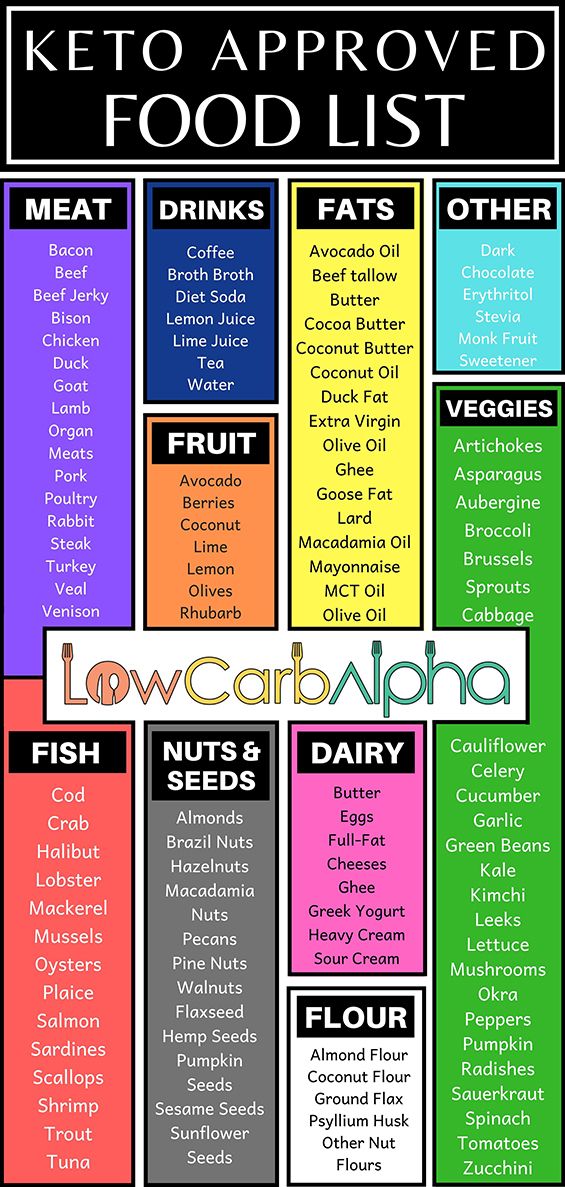
Primary Source of Energy
Glucose is the simplest molecule for your body to convert and use as energy.
Hence, it will be the preferred source of energy above anything else.
Some people believe that an abundance of carbohydrates is essential for brain function.
Only when ketones are not available does this become true.
Insulin is produced for processing glucose in the bloodstream, which circulates in your body.
Your body will not use any fats since glucose is the primary energy source.
Fats take longer to be tapped into since your body must first use glucose for energy.
On a typical higher carbohydrate diet, the body will use glucose as a primary form of energy.
It doesn’t matter if you eat simple sugars or a complex carbohydrate.
Both types of carbs will turn into blood sugar in the body, preventing fat burning.

What exactly is Ketosis?
If you reduce the consumption of carbohydrates over a period, the body will begin to break down body fat for energy for everyday duties.
This is a natural process called ketosis, which the body undertakes to help us survive when food intake is low.
During this state, we produce ketones made from the breakdown of fats in the liver.(2)
Ketones are a byproduct of fatty acids when they convert into fuel.
Ketone bodies in the blood have substantially increased to higher than average amounts.
Ketones are used by the brain, muscle, and all tissue, which contains mitochondria.
Over time you soon learn how to recognize the symptoms of ketosis.
The purpose of an adequately controlled ketogenic diet is to push your body into the metabolic state to burn fats as energy.
Not through depriving your body of calories, but through avoiding carbohydrates.
Our bodies are remarkably adaptive to what you put into it.
Taking keto supplements such as keto OS can optimize cellular regeneration, energy, and longevity.
You can see our review of Pruvit Keto OS for more.
When there is an overload of fats and carbohydrates removed, it will begin to burn ketones as the primary energy source.
Who shouldn’t do a Ketogenic Diet?
A ketogenic diet is safe for the majority of people, but people with type 1 diabetes should be extra prepared.
Strict low carb, low protein diets result in ketosis, a normal physiological state.
For healthy people, this is no problem, but in type 1 diabetes this means you’re close to ketoacidosis.
It’s possible to get great results with lower carb high-fat or a Paleo diet for people with type 1 diabetes.
Consuming a moderate amount of carbs as a starting point would be good.
As with individuals with type 1 diabetes and everyone with a medical condition, then get advice from your doctor.
The Benefits of Ketosis?
Utilizing fats for energy is one of the main benefits of a ketogenic diet.
Your body becomes efficient at mobilizing fats as energy.
Appetite suppression is a big factor in feeling full, and more often than not, it will limit overindulgence in food.
You don’t need to feel hunger pangs on reduced-calorie diets.
High carbohydrate diets, as we should know by now, increase hunger levels and inhibits fat burning.
You can eat a bowl of cereal or slices of toast, and you are guaranteed to be hungry in a few hours.
Ketogenic diets improve insulin sensitivity and fasting glucose, which decreases the aging process.
High insulin levels hinder the use of fatty acids for energy stop fat loss and cause weight gain.(3)(4)
Carb Cycling and Working Out
If you compete in sports or have an exercise regime on keto, you may find you have less energy to complete your workouts.
A couple of ways to remedy this is to try variations of a keto diet.
On a targeted ketogenic diet you would consume carbs before and straight after your workouts to give yourself that extra push.
If involved in high-intensity interval training, this would be a great help.
A cyclical keto diet is also a popular variation for those who exercise intensely.
For example, you would eat your normal amount of carbohydrates per day for 5 days, around or under 50 grams.
On the weekend or days of your choosing, you would then do a large carb-loading phase.
Plenty of carbohydrates is eaten to refill your muscle glycogen reserves; you can then use this to fuel your fat-burning workouts during the week.
For the carb-loading phase, you want to be consuming protein and carbohydrates only.
Cut virtually all the fat out and save that for your 5 days when you are eating low carb high fat.
Check out our sample bodybuilding meal plan for an idea what to eat.
Obviously, try and stick to whole foods and consume the healthiest carbohydrates possible.
If you decide to go out on the weekend and drink alcohol on keto, followed by eating fast food to finish your evening, then you’ve pretty much wasted your week of hard work.
For an example of sugar content per cup of veggies see the low carb vegetable guide below.
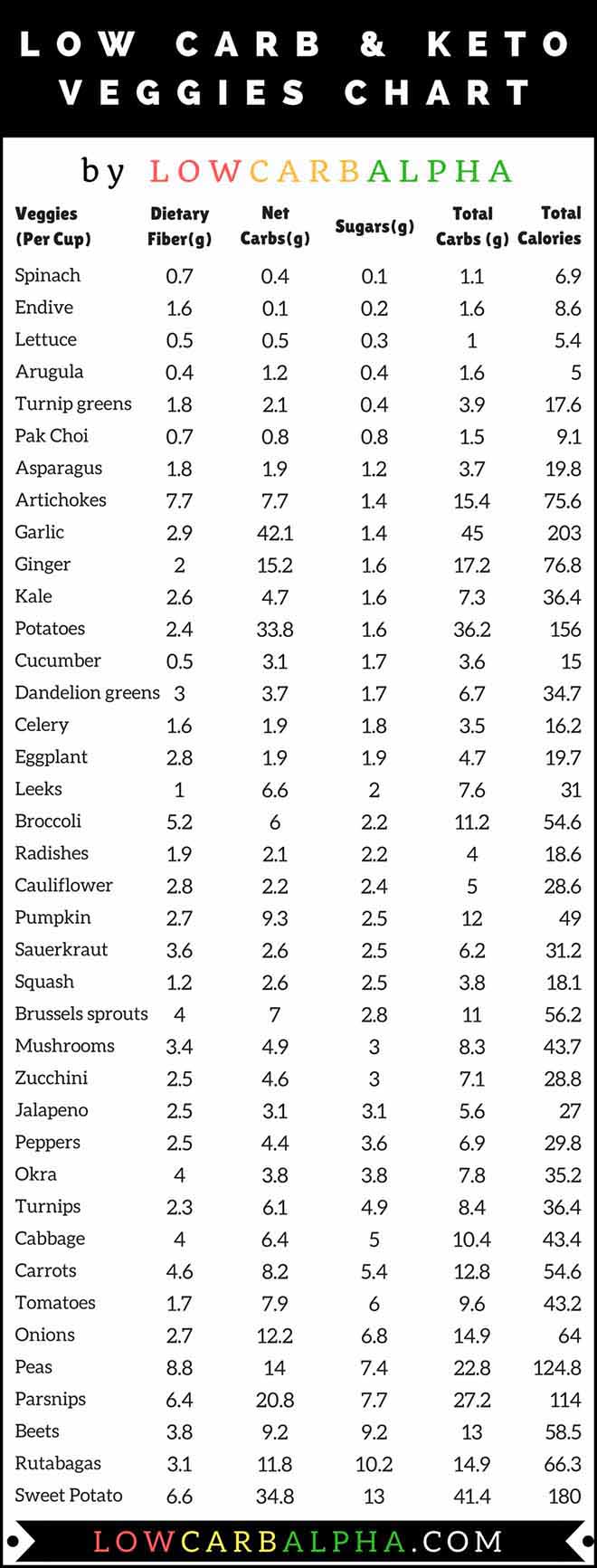
Sodium Intake on Keto
Your sodium intake is one of the most important things to maintain while on a keto diet.
Low sodium can leave you feeling unwell with reduced energy levels. You could end up blaming the lack of carbs and glucose if you don’t realize it.
When you eat keto foods, you will no longer be eating processed foods.
It’s very easy to forget to add enough salt to your diet when consuming whole foods.
If you sweat a lot and participate in any exercise or sports, you’re also going to need to increase your salt intake.
You can easily counteract these effects of keto flu by replenishing electrolytes.
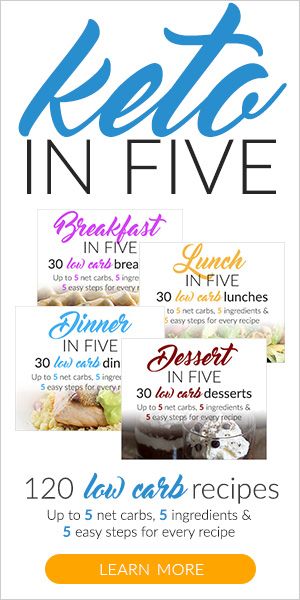
What To Eat on a Keto Diet?
Consuming high amounts of dietary fat, low dietary carbohydrate and moderate proteins are key characteristics of a ketogenic diet.
The exact proportions of carbs, fats, and protein vary from person to person.
An optimal keto diet will generally be around 75% fat, 20% proteins, and 5% net carbs.
It’s not possible to completely avoid carbs since it’s basically in every vegetable, and they are a must for any diet.
Something else you may wish to consider is fermented foods.
Cultured foods such as water and milk kefir have high amounts of probiotics and are great for the health of your gut.
To stay in a fat-burning ketosis mode, consume additional carbohydrates based on your activity levels.
You can eat up to 100 grams of carbs a day and still achieve ketosis.
For most people, though a maximum of 50 grams of carbs a day will work.
For more help on what to eat on keto check out our ketogenic diet food list.
High protein intakes and ketogenic dieting simply does not mix since too much dietary protein can inhibit ketosis.
Every gym you go to, you see someone drinking a protein shake, protein bars, or eating protein snacks.
You’ll turn a lot of heads if you whip out your avocado or coconut oil as your post-workout snack.
It’s here where keto dieting can fail! It’s drilled into everyone’s head that you require extra protein for muscle building and burning fat.
Switching from high carb to high-fat dieting may not be straightforward and won’t be for everybody.
What can I eat on a Ketogenic Diet Infographic
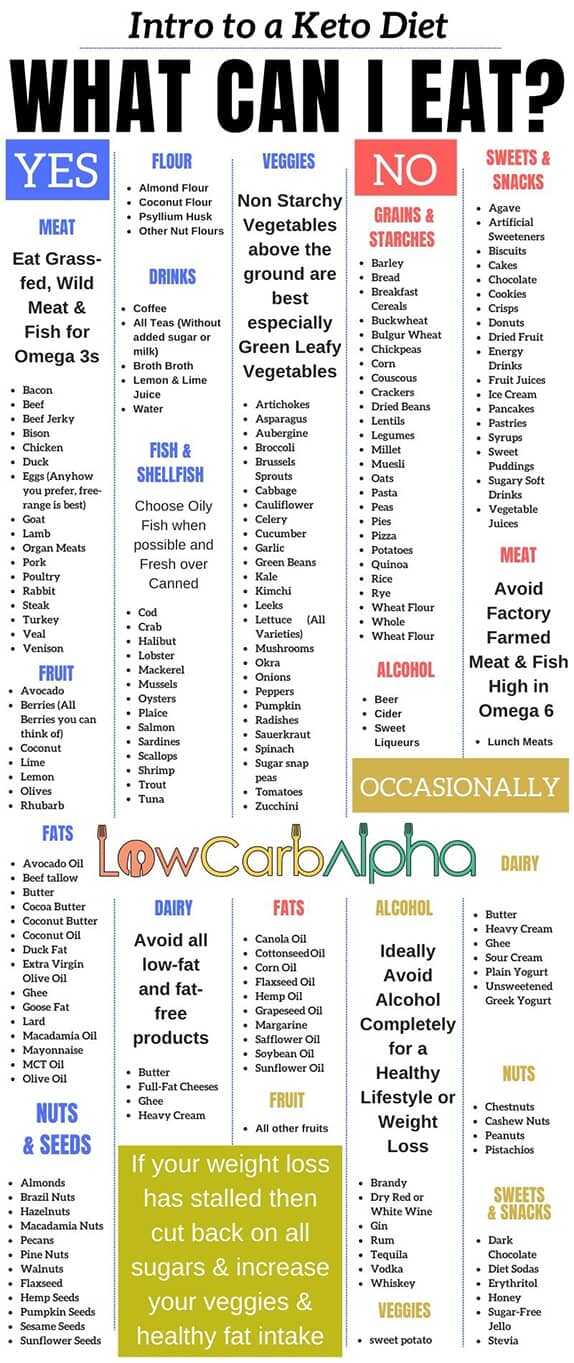
Conclusion
Always consult your doctor, dietitian, or healthcare professional first to check if it’s suitable for you.
If so, and you have extra weight to lose, then I encourage you to start a ketogenic diet for fat loss.
It’s a great diet for improving your health and wellbeing.
Whatever diet you choose, make sure to increase your exercise and eat plenty of nutritious vegetables for the best results.
So there you have a simple introduction to keto.
With a bit of tweaking to your diet, you can achieve improved body composition, better health, and turn yourself into a fat-burning machine.
If you’re looking to begin a ketogenic diet or have any questions about eating a low carb or high-fat diet, then please leave your questions, comments, and feedback below.
Please also share this blog post to help increase keto awareness.
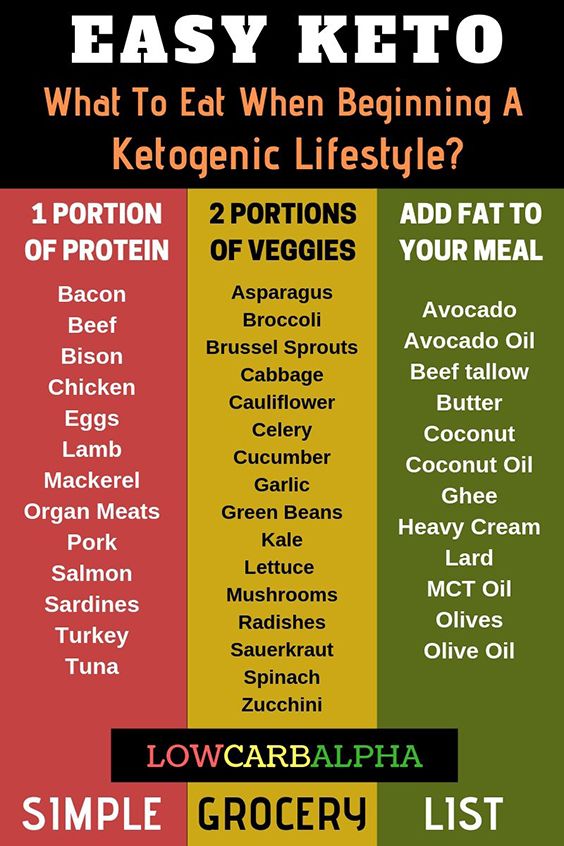

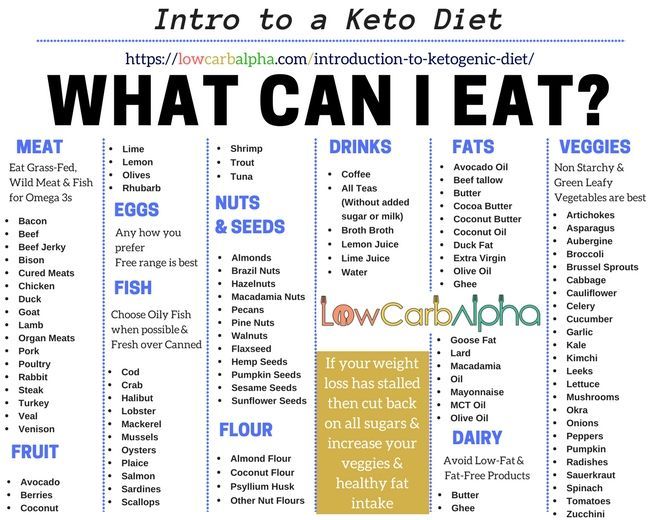


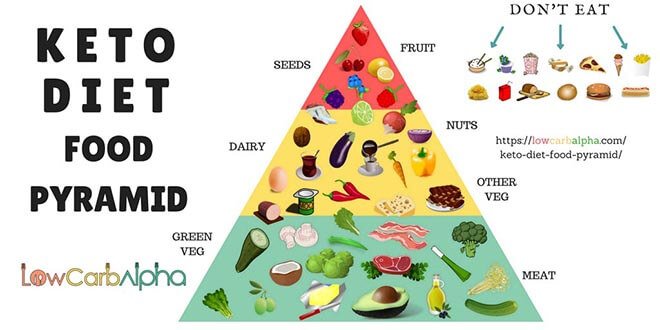
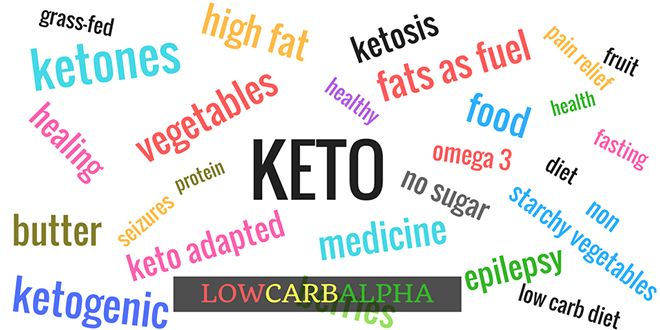
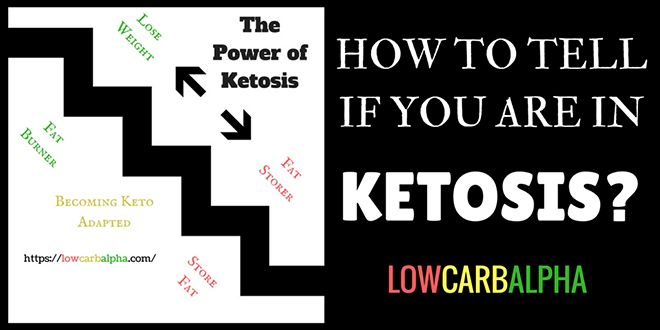
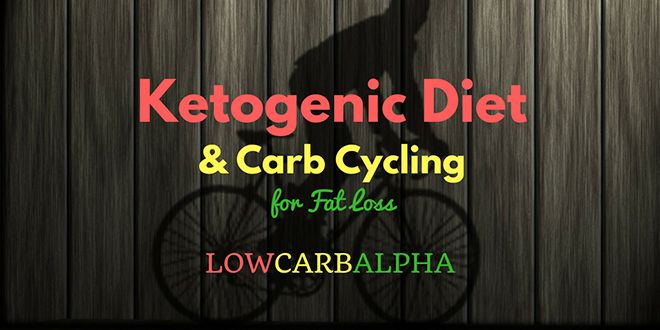
I’ve been on the keto diet for two weeks now and I still am not in ketosis. I seem to have an issue with my fat protein ratio. What should I be eating for my meals to have higher fat and not as high protein?
Hi Cindy, you can check our keto foods list for an idea for what foods to eat.
I am a 58 year old Male started at 194 lbs. today I am at 168 lbs. (actually 2 lbs under my desired weight), Spending two days a week in the gym, cycling 90 minutes (once a week) doing Stomach excerise three times a week and eating 1500 to 1650 in calories (I think i should increase calorie count), drinking plenty of water, engery level is growing endurance is doing fine. Actually been on Keto diet for 5 months and Loving it.
Is there a limit to how much of any food you can eat on the list? Also I’ve had the gastric sleeve over 2 years ago. I’ve noticed I’ve started added more carbs so decided to try keto. Should I be cautious of anything?
where did you get gastric sleeve done? w/ out of pocket $? Thinking about it… Safe?
Coke#molly#ketamine. Here with me
what exactly is the differance between low carb and keto? I have been doing flourless, carbless for 2 years. I saw weight loss in the beginning but have stalled out. What can I eat to make this work? The worst I have is sweetner in my coffee once a day and a 2 carb monster. So shat am I missing???
Fat! When I stall out, if I add more fats, I start to lose weight again.
Hi great post, I came across your Pinterest group board (Nutrition Group Board) and I would really love to contribute to it, by pinning great post as this, Please grant me this favour by sending me an invite, I will be really grateful, Thanks in advance.